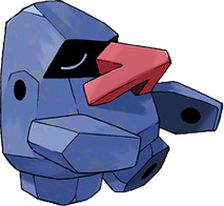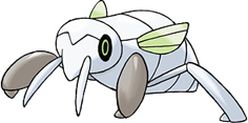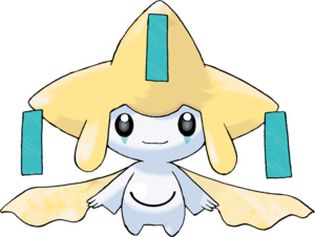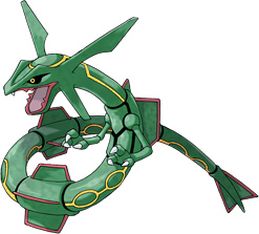
It is based on the Moai statues of Easter Island, as well as a compass.
Its nasal compass may be based on the magnetic ethmoid bone that is located between the nasal cavity and the brain, and is known to give some species of birds their sense of direction.
Nosepass is a combination of nose and compass.
No: 299
English Name: Nosepass
Japanese Name: Nozupasu
Generation: 3
Type: Rock
Species: Compass Pokémon
Abilities: Magnet Pull, Sturdy, Sand Force (hidden ability)
Evolution: Nosepass > Probopass
Nosepass is a blue, angular, hard bipedal Pokémon that closely resembles the Easter Island Heads. Its bright red, triangular nose is highly magnetic and slightly resembles a 3D arrow. This nose functions as an electromagnet and always points north. It has arms and legs without any visible joints and small, circular holes on the undersides. Its arms resemble compass needles. It has similar circular holes on the sides of its head. Its eyes, covered by dark, somewhat mask-like markings, have the appearance of being closed.
Nosepass cannot go near others, since it would repel them with its magnetic nose. Its magnetism is stronger in cold seasons. To protect itself when in danger, it raises its magnetism and draws iron objects to its body. This technique is also used to capture prey. Nosepass only moves a little over 3/8 of an inch each year. It lives in caves.
POKEDEX ENTRIES
Pokemon Ruby: Nosepass’s magnetic nose is always pointed to the north. If two of these Pokémon meet, they cannot turn their faces to each other when they are close because their magnetic noses repel one another.
Pokemon Sapphire: Nosepass had been said to be completely unmoving, with its magnetic nose pointed due north. However, close observation has revealed that the Pokémon actually moves by a little over 3/8 of an inch every year.
Pokemon Emerald: Its body emits a powerful magnetism. It feeds on prey that is pulled in by the force. Its magnetism is stronger in cold seasons.
Pokemon FireRed: Its magnetic nose consistently faces north. Travelers check Nosepass to get their bearings.
Pokemon LeafGreen: Its magnetic nose consistently faces north. Travelers check Nosepass to get their bearings.
Pokemon Diamond: Its nose is a magnet. As a result, this Pokémon always keeps its face pointing north.
Pokemon Pearl: Its nose is a magnet. As a result, this Pokémon always keeps its face pointing north.
Pokemon Platinum: When endangered, it may protect itself by raising its magnetism and drawing iron objects to its body.
Pokemon HeartGold: If two of these meet, they cannot get too close because their noses repel each other.
Pokemon SoulSilver: If two of these meet, they cannot get too close because their noses repel each other.
Pokemon Black: When endangered, it may protect itself by raising its magnetism and drawing iron objects to its body.
Pokemon White: When endangered, it may protect itself by raising its magnetism and drawing iron objects to its body.
Pokemon Black 2: Its magnetic nose always faces north and draws iron objects to its body to protect itself better.
pokemon White 2: Its magnetic nose always faces north and draws iron objects to its body to protect itself better.
Pokemon X: Its magnetic nose always faces north and draws iron objects to its body to protect itself better.
Pokemon Y: Its magnetic nose consistently faces north. Travelers check Nosepass to get their bearings.
Pokemon Omega Ruby: Nosepass’s magnetic nose is always pointed to the north. If two of these Pokémon meet, they cannot turn their faces to each other when they are close because their magnetic noses repel one another.
Pokemon Alpha Sapphire: Nosepass had been said to be completely unmoving, with its magnetic nose pointed due north. However, close observation has revealed that the Pokémon actually moves by a little over 3/8 of an inch every year.
Pokemon SUN: The magnet in Nosepass’s nose provides an unerring compass, making it an excellent partner for Trainers going on a journey.
Pokemon MOON: It uses powerful magnetism to drag its prey toward it. It’s also been known to pull in metal, which it collects and uses to protect itself.



